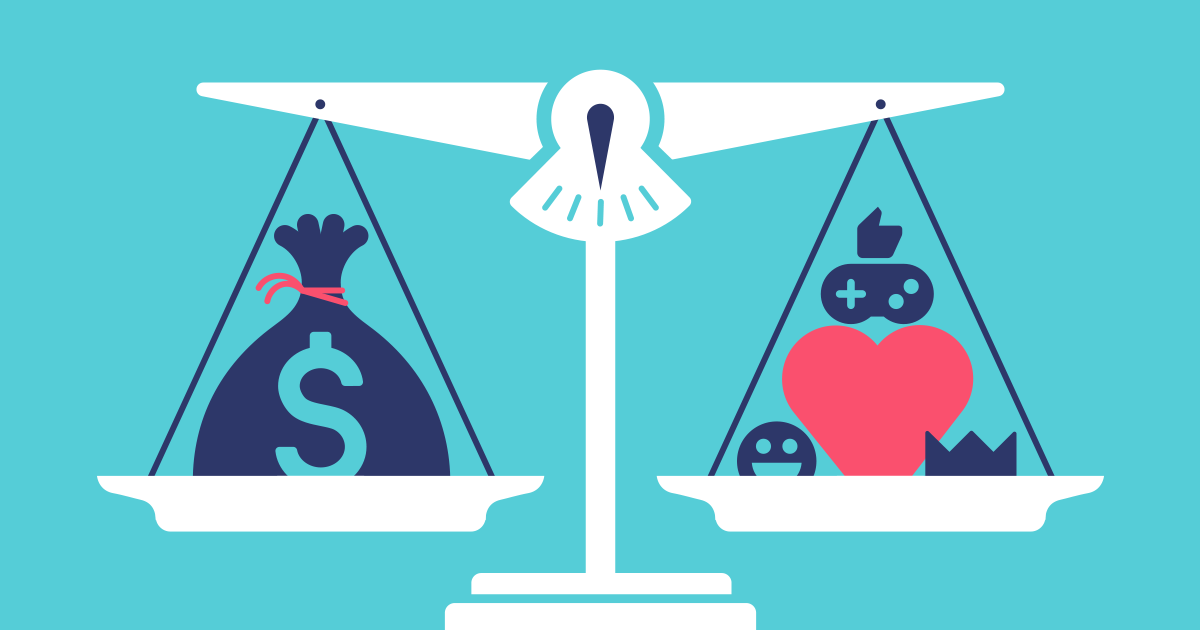Ultimately, marketing is a game of attention. When consumers shifted from TV to video-based platforms such as YouTube and Twitch, the marketing industry was not far behind. It quickly found solutions for those platforms.
Over the past couple of years, there has been a major trend in content creators taking more control over their marketing. So, how can you, as a content creator, monetize your channel? What are your real options? What is the useful information you need to know in order to make the best next move? Below, we take a look at three key areas, with a particular focus on YouTube and Twitch.
Ad Revenue
Monetizing your channel through ad revenue is a key strategy, and the most well-known method. Both YouTube and Twitch have quantifiable ways for you to monetize ads shown on your channel (see more below). But, there is much more to monetizing your channel through ad revenue than that.
Be Mindful Of “Advertiser-Friendly” Content
A couple of years ago, YouTube made some major changes to its algorithm, and therefore the way it served ads. After this change, many content creators experienced a drop in ad revenue, and some even had content demonetized because it wasn’t “Advertiser-Friendly.”
Despite gaming channels being a huge opportunity for advertisers, they were among the most affected by this change due to content creators making use of games with graphic elements (e.g. violence). While YouTube has amended its guidelines since then, they are still quite vague, and its algorithm is particularly opaque. As such, it would be better to avoid unnecessary risks, and to stay mindful of the content of your content.
Embrace Long-Form Content
As part of YouTube’s old policy, your channel would have only needed 10,000 lifetime views in order to qualify for monetization. Since the start of 2018, however, your channel needs to meet two criteria:
- It has to have reached at least 4,000 hours of viewing time in the past year.
- It has to have at least 1,000 subscribers.
YouTube values viewing time over view count because, as a platform, it wants to keep as many users engaging with it for as long as possible. This, in turn, means that view time is also more valuable to you as a content creator, because longer videos mean more ads per video.
It isn’t easy to make potential viewers watch a 15-second ad when the content that follows will only be 60 seconds long itself, and so making your videos longer avoids the problems of short-form content. Nowadays, it is not unusual for long-form content to contain multiple adverts. This is comparable to commercial breaks on television, which is a way for you (and YouTube) to generate more revenue.
Embrace The System
It is no secret that there is an ongoing battle between advertisers and ad blocking software companies, and this has a huge effect on those advertisers’ ability to generate revenue. A recent three-year ad blocking audit among members of the AOP showed a median annual publisher loss of around €1 million (£932,875). This loss passes on to you as a content creator, and so the best thing you can do is to refrain from using ad blockers and to be an ad advocate.
Those publishers (such as YouTube and Twitch) also have access to a lot of resources, including analysis tools that can detect attempts to try to circumvent their system. Despite this, some users still engage in strategies that use subscriptions and views as a commodity to cause inorganic growth. If your channel shows signs of being engaged in any sub4sub-like scheme, your ability to monetize can be denied or disabled immediately.
Reach Out To Other Audiences
A common practice among Twitch streamers is to edit their live-streams to link gameplay highlights into compilation videos, and then repost them to other channels (notably YouTube Gaming or Facebook Gaming). If you’re a streamer, this is a relatively easy and reliable way of generating extra ad revenue – by reaching a non-Twitch audience.
Sponsorships
Sponsorship deals are revered, and there are a lot of expectations that revolve around them. the type of sponsorship you can get, however, depends on certain variables. When thinking about monetizing your channel via sponsorships, there are several things to consider.
Understand What Sponsorships Really Are
If you manage to get a sponsorship, in basic terms, it means that you will get paid by cooperating with sellers in order to promote their products on your channel. Even though sponsorships are seen by some content creators as an endgame in and of themselves, not only large channels end up making sponsorship deals. Sometimes, micro-influencers – with subscribers even in the 1,000s range – can be approached by a larger brand or a marketing company.
Understand What Sponsorships Are Not
Being sponsored also doesn’t necessarily mean that you will get a large, reliable monthly paycheck. It is common for companies to pay you simply for a tweet about their product/service, or a certain number of mentions of their product/service in a given format. The amount of revenue you will receive depends on qualitative factors, such as who your audience is, and the current state of the market, as well as the crucial metrics.
Balance Your Content Types
One way to monetize your channel is through the use of quality sponsored content that is relevant to your audience. Bear in mind that there is a difference between high-quality sponsored content and ads. Good content is typically more transparent, and offers people a good experience.
For example, if you have already built up a few thousand subscribers on your yoga YouTube channel, a brand could decide to sponsor one of your episodes. You could even end up producing sponsored content for several different brands (especially if your channel’s subject is somewhat niche).
But, if you lean towards this option too heavily, it will have the reverse effect – your channel will lack authenticity and this will drive away potential new subscribers. The key is to continue to create the organic content that attracted subscribers in the first place, and balance it with sponsored posts that are relevant and of interest to your current base (and that positively portray the sponsor, of course).
Twitch Partnerships
Twitch’s ad revenue model is that of a flat-rate CPM and, like YouTube, Twitch makes extensive use of ads (both pre-roll and interstitial). So, if you are a Twitch streamer, one important strategy for generating revenue is partnering with brands, which could be as large and long-term as collaborating on an ongoing brand ambassadorship, to a small one-time campaign.
Now Is The Time
Compared to YouTube, it is often much easier to provide incentives with Twitch. You can demand more revenue with a much smaller viewership (for now – get in on the ground floor), and, while it might come as no surprise that the most common sponsors come from the gaming industry, other types of brands are partnering with Twitch creators to form influencer marketing campaigns at an ever increasing rate.
The Affiliate/Partner Program
In a similar way to YouTube, Twitch allows content creators to monetize their channel through partner programs. The first, and generally more attainable, is the Affiliate Program, for which you are eligible to join if you meet four criteria:
- At least 500 total minutes broadcast in the last 30 days.
- At least 7 unique broadcast days in the last 30 days.
- An average of 3 concurrent viewers or more over the last 30 days.
- At least 50 followers.
The exclusive Twitch Partner program, however, is aimed at the platform’s top streamers. Though you can submit a request for consideration, you are normally only invited to become a partner. Twitch doesn’t publish the selection criteria for the Partner program. However, the platform does provide a general list for evaluation – content, average concurrent viewership and stream frequency and schedule.
Though it is famously difficult to become a Twitch partner, if you do become one, you will receive the benefits available to affiliates, as well as various others – most notably that you can generate additional revenue via monthly subscriptions.
Geared For Creators
In the UK, if you watch Channel 4 on TV, you can pause and fast-forward through ads (if you have a TV that can do so, of course). You can’t do so online, however. That is because TV is a passive medium, whereas online is an active medium. Channel 4 prefers to target people where they are most engaged. In the same way, Twitch ads are broadcast directly to a number of people who can’t pause or skip those ads. Online ads – and therefore Twitch ads – are active, and therefore worth a lot more money.
Similarly, as of September 2018, Twitch phased out ad-free viewing for Twitch Prime members (which used to be a perk) as part of its efforts to support revenue streams for its content creators.
Cheers
One of the basic functions of Twitch, as a platform, is to be able to “cheer” other people during live streams. But, this functionality extends even to channels that aren’t necessarily on Twitch. You don’t even have to be a live streamer to receive donations in this way. Various web services can manage this process and increase engagement by displaying text-to-speech messages or animations or GIFs each time someone makes a donation.
Influencer Marketing
In the end, the best decisions are made using the best available data, and in a game of attention, it pays to have the right tools at your disposal.
One of the most prevalent ways in which content creators are taking more control over their marketing is via influencers – which is where Matchmade comes in. Influencers and advertisers have a symbiotic relationship, and Matchmade is there to bring them together.




